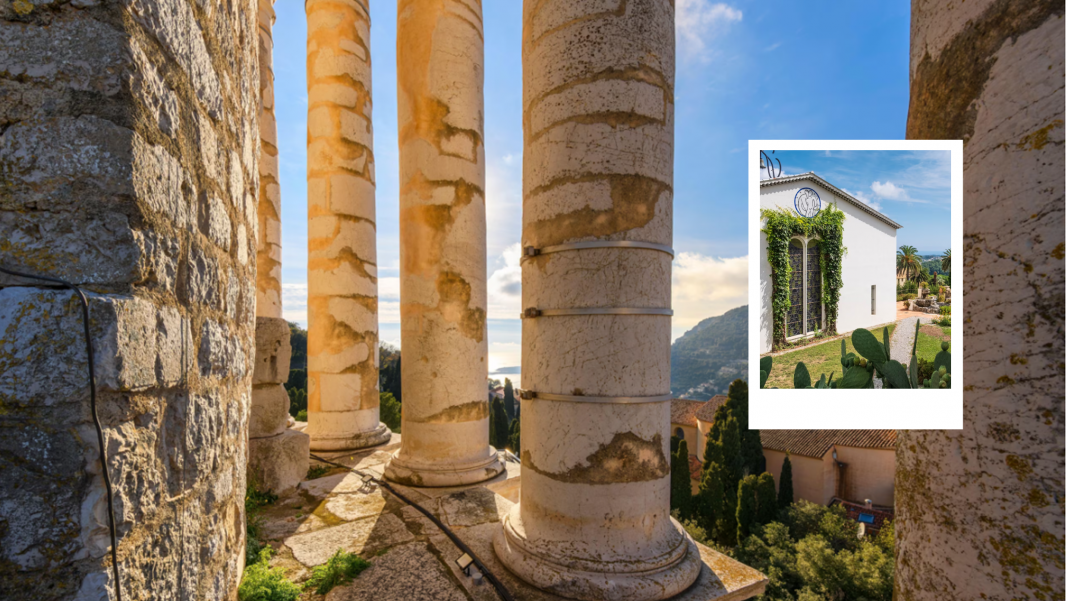While the French Riviera’s iconic hotspots like Nice and Cannes draw crowds, several lesser-known towns offer an intimate blend of history, art and nature—perfect for travelers seeking a peaceful and authentic Mediterranean experience. From Vence’s artistic heritage to La Turbie’s Roman legacy and Roquebrune-Cap-Martin’s architectural wonders, these hidden gems showcase the Riviera’s softer, quieter side.
Vence: Turning sunlight into art
Nestled between the Mediterranean coastline and the French Prealps, Vence is a town where history and creativity intertwine under gentle sunlight. Unlike the glitz of the Riviera’s seaside resorts, Vence reveals its character in layers—starting with its medieval walls that shelter winding cobblestone streets, bustling markets, and quaint cafés. Though the outskirts might appear unremarkable, the heart of the town pulses with artistic legacy and a sense of timeless village charm.
Steve Wilkison, a Californian who relocated to Vence in 2016 and now guides visitors through its secrets, describes the town as “a village within a city” where nearly 20,000 residents live amid Roman ruins and vibrant community life. The small yet striking Cathedral of Our Lady of the Nativity, built atop a former Roman temple, houses a stunning Marc Chagall mosaic and stands as France’s smallest cathedral. Nearby, Roman remnants peek from the cathedral’s ancient walls, weaving history directly into the urban fabric.
One cannot speak of Vence without mentioning La Chapelle du Rosaire, designed by Henri Matisse during his 1940s stay. This intimate chapel, adorned with glowing blue and white tiles and suffused with colored light from its stained-glass windows, represents a masterpiece of 20th-century religious art. Matisse’s visionary design captures the essence of the town—bright, serene, and steeped in artistic reverence. From its surrounding gardens, views stretch across Vence’s rooftops, immortalized in the brushstrokes of Raoul Dufy.
La Turbie: Roman ruins and sweeping vistas
Heading eastward, the village of La Turbie perches dramatically above the Mediterranean, overlooking Monaco from its lofty position along the Grande Corniche. The village’s centerpiece is the Trophy of Augustus, a monumental Roman triumphal arch erected over 2,000 years ago to celebrate Emperor Augustus’ conquest of the Alpine tribes. This awe-inspiring relic offers a tangible connection to the grandeur and engineering prowess of the ancient empire.
Beyond the monument, visitors can embark on scenic hikes to La Turbie’s hilltop cemetery, where panoramic vistas unfold. From this vantage point, Monaco’s glistening yachts and futuristic skyline feel close enough to touch, while the surrounding Prealps frame the horizon. The village itself charms with quiet cobblestone lanes, shuttered ochre houses, and sunbathing cats—an inviting contrast to the bustling neighboring resorts.
La Turbie’s location atop the Grande Corniche means it’s cradled by a natural park filled with hiking and cycling trails. Parc Naturel Départemental de la Grande Corniche is a haven for nature lovers, with well-kept paths leading to stunning overlooks like La Tête de Chien. Built during Napoleon’s era, this scenic route weaves history and landscape into an unforgettable journey through the Riviera’s mountainous edge.
Roquebrune-Cap-Martin: Where architects come to dream
Further along the coast, Roquebrune-Cap-Martin draws architecture enthusiasts from around the world. This cliffside town melds medieval charm with modernist innovation, offering a rich narrative across centuries of design.
At Cap Moderne, visitors can explore the seaside promenade named for Le Corbusier, the visionary architect who spent his final years here. His modest wooden retreat, Le Cabanon, remains open to visitors, offering a glimpse into the life of one of modernism’s pioneers. Nearby stands Villa E-1027, the elegant home designed by Eileen Gray, whose work helped define early 20th-century modernist architecture. This villa embodies the five key principles championed by Le Corbusier—pilotis, rooftop garden, horizontal windows, open plan, and free façade and after careful restoration, it continues to inspire architects and artists alike.
The medieval village of Roquebrune-Cap-Martin contrasts with the modernist sites. Accessible by bus or a steep climb, its pedestrian-only streets wind past stone archways and ivy-covered walls to the ruins of a 10th-century castle, one of France’s oldest. This fortress once belonged to the Grimaldi family and later to an English owner before being returned to the town in 1921. From the castle’s ramparts, breathtaking views stretch west to Monaco and France and eastward into Italy, with the Mediterranean Sea painting a shimmering blue backdrop.
Hidden treasures beyond the crowds
While the French Riviera’s headline cities offer glamour and excitement, these under-the-radar towns reveal the region’s deeper soul. Vence, La Turbie, and Roquebrune-Cap-Martin invite visitors to slow down, immerse themselves in rich histories, and enjoy breathtaking landscapes free from throngs of tourists. Here, art, nature, and heritage live quietly side by side—waiting to be discovered by those who seek a more intimate Riviera experience.



